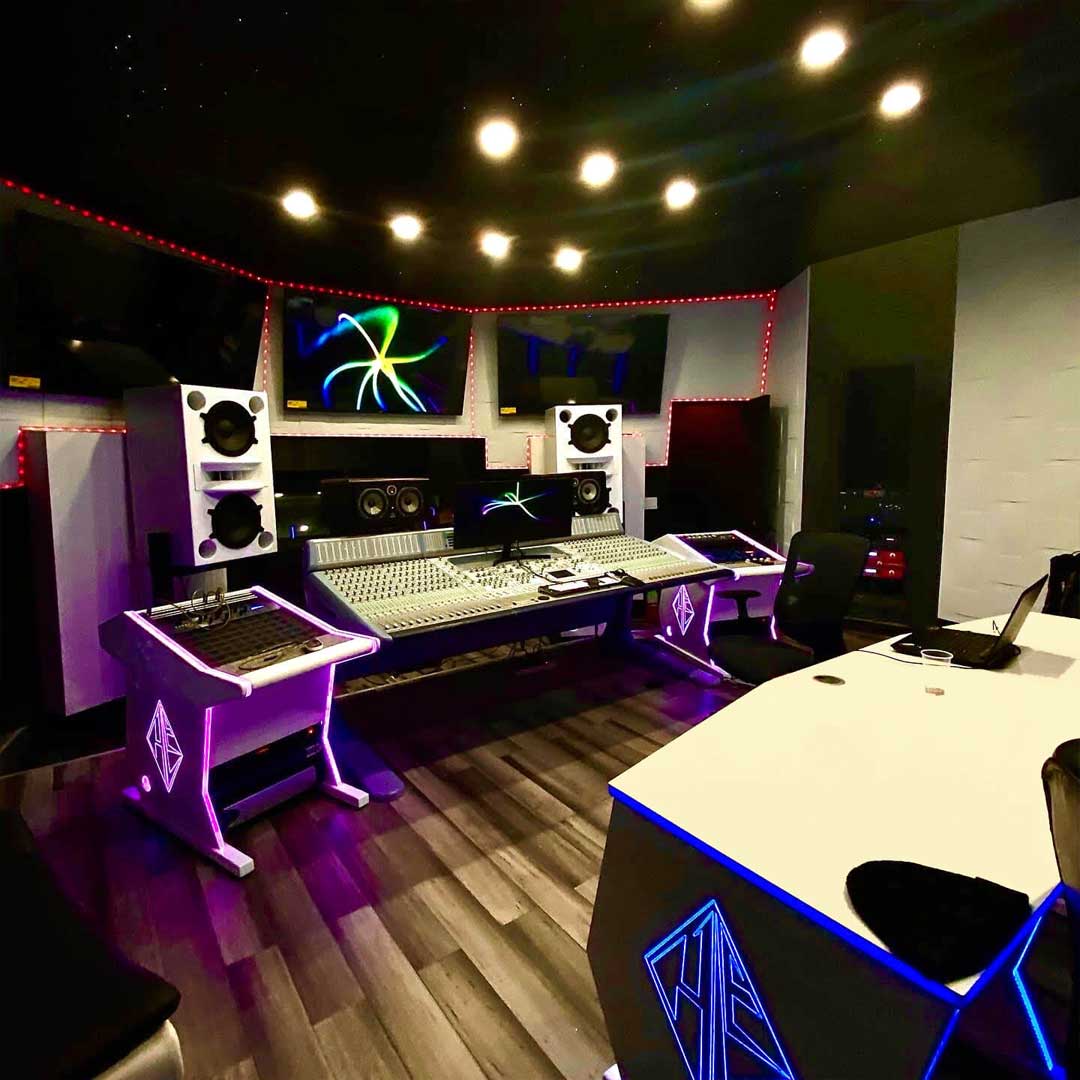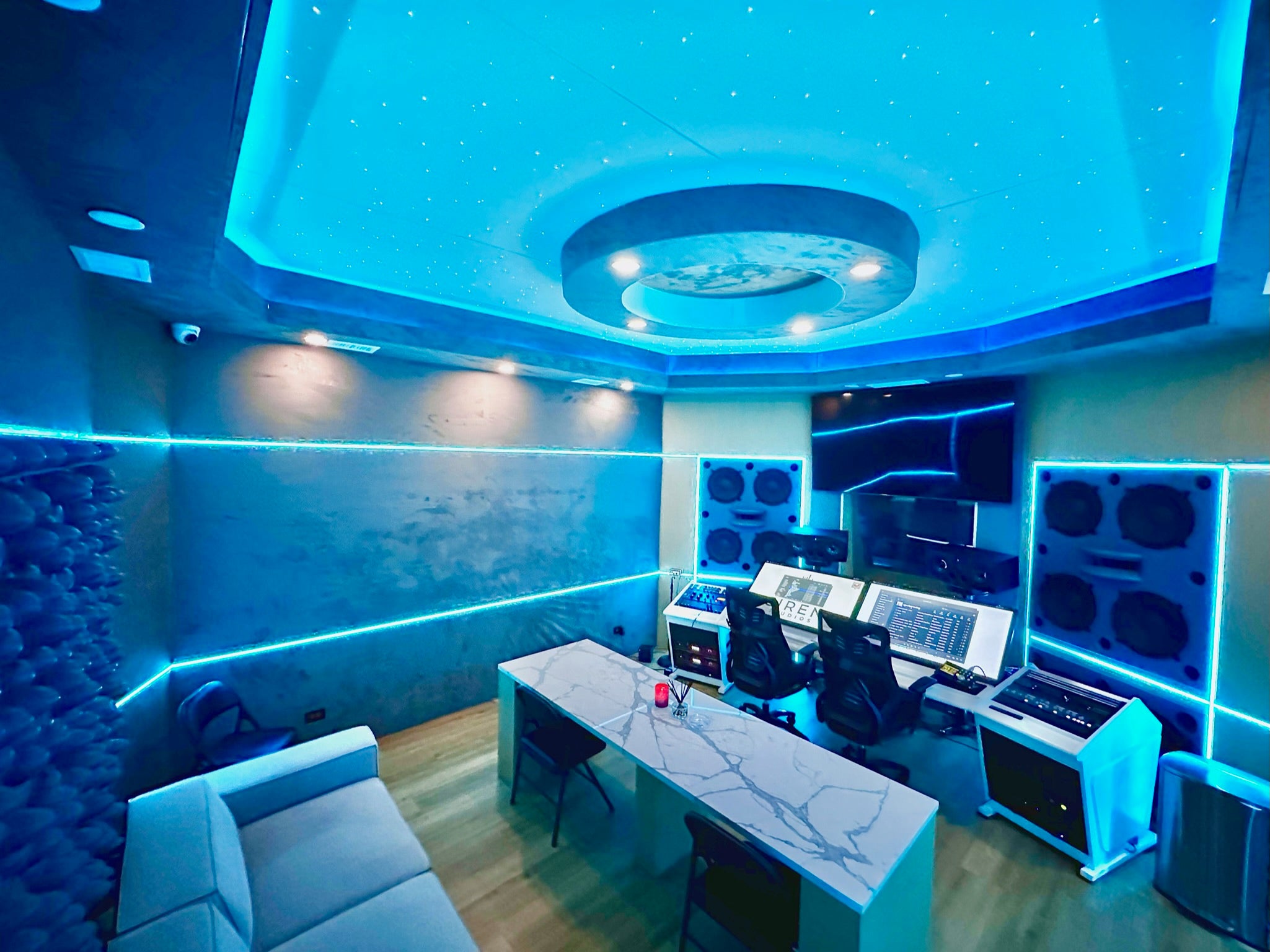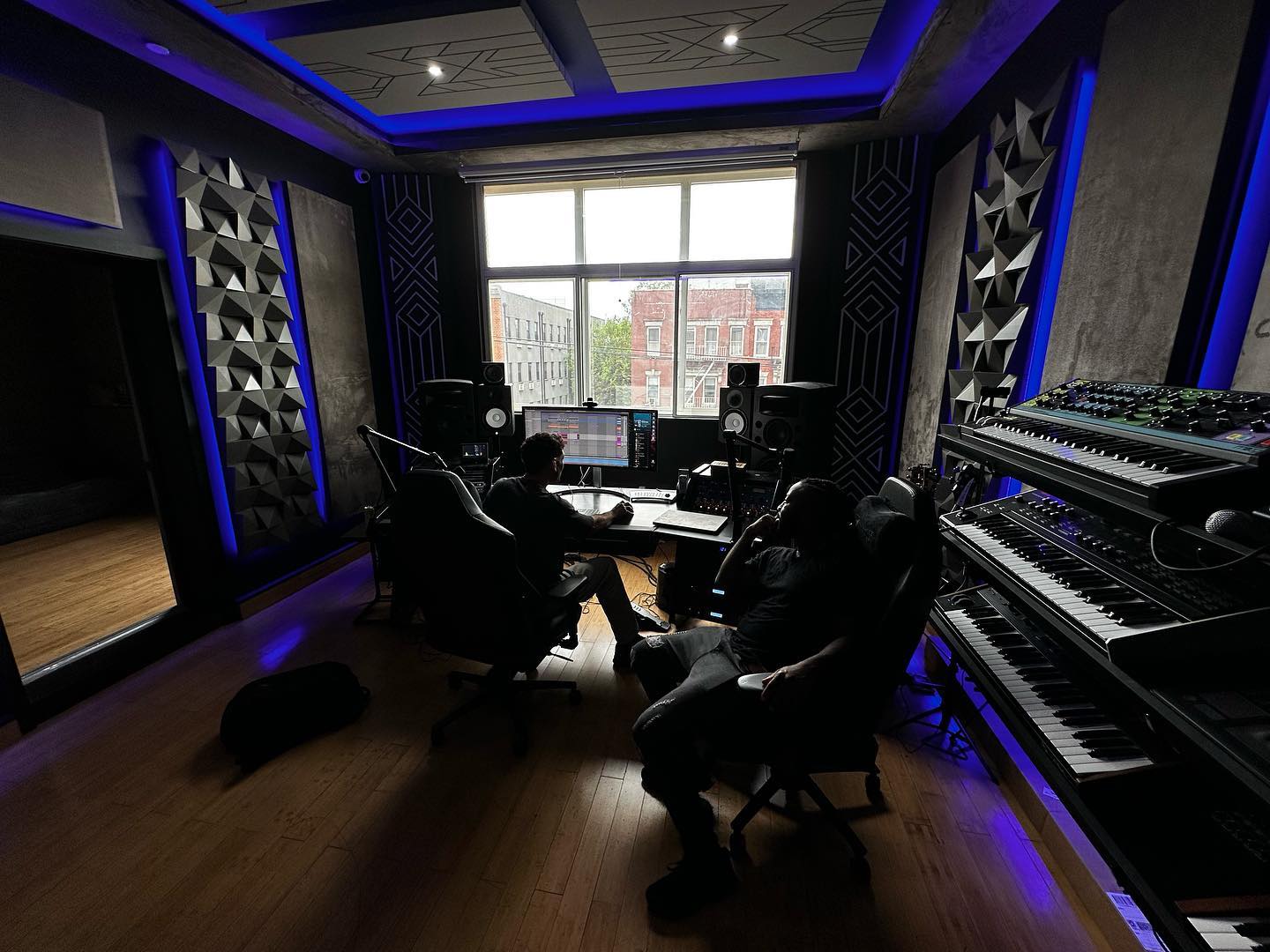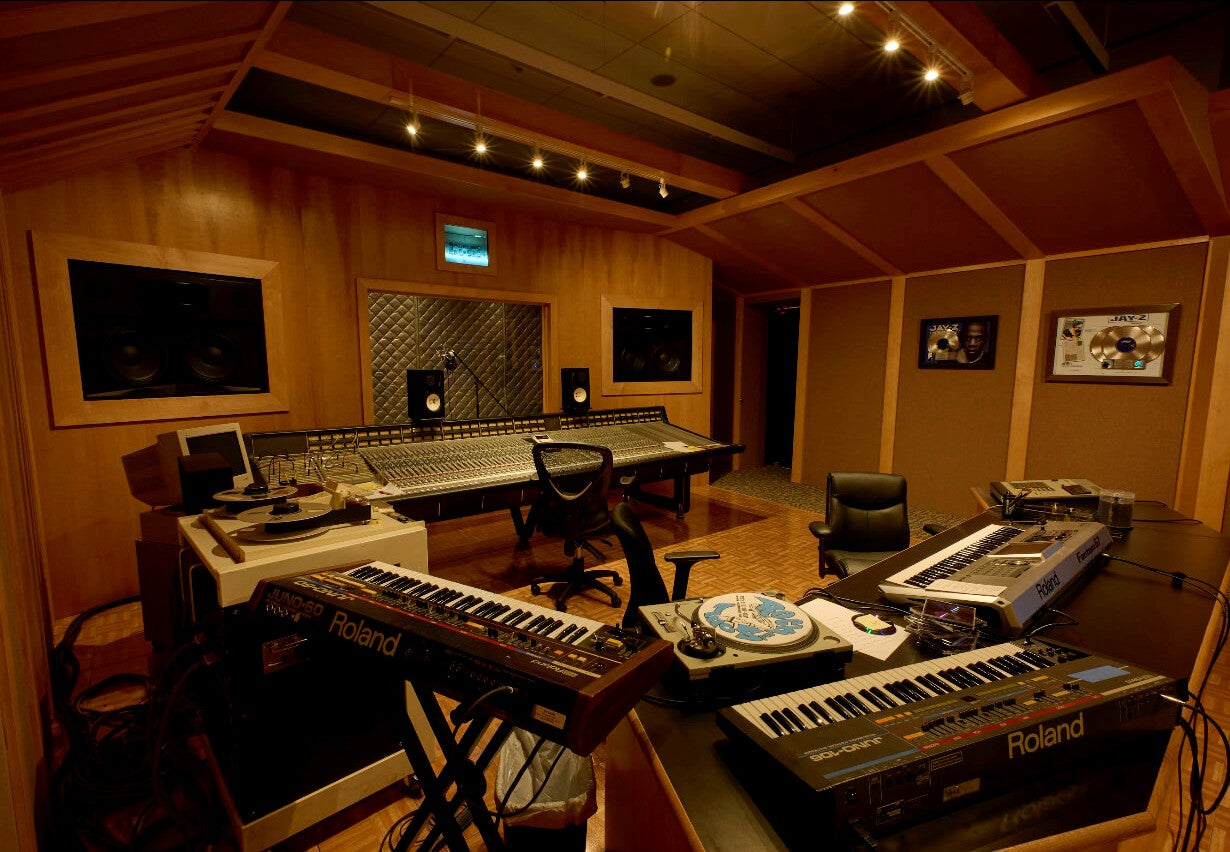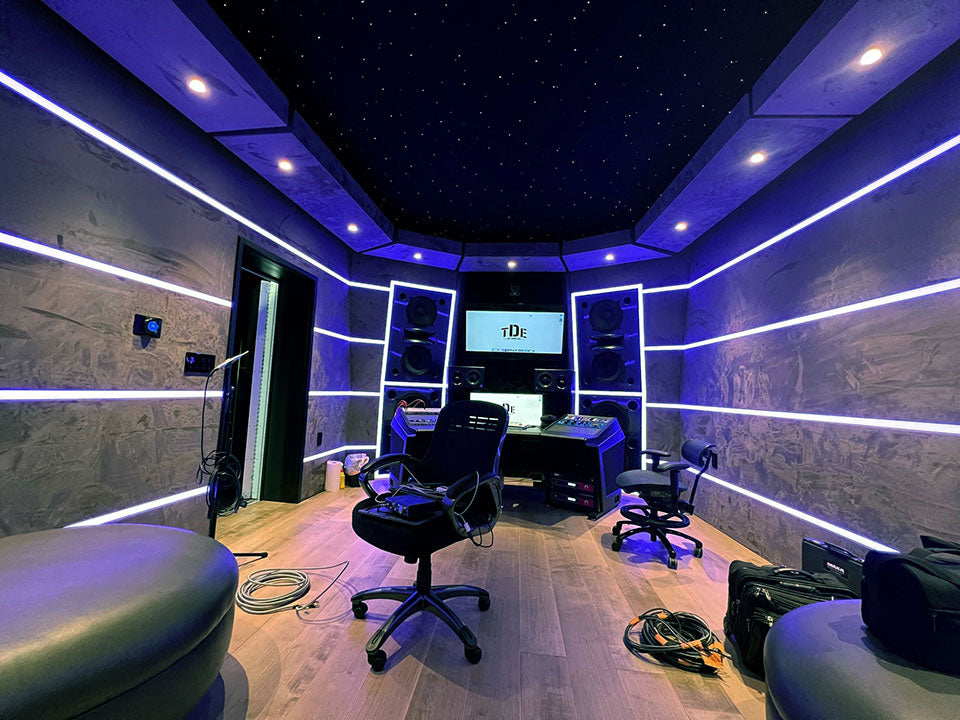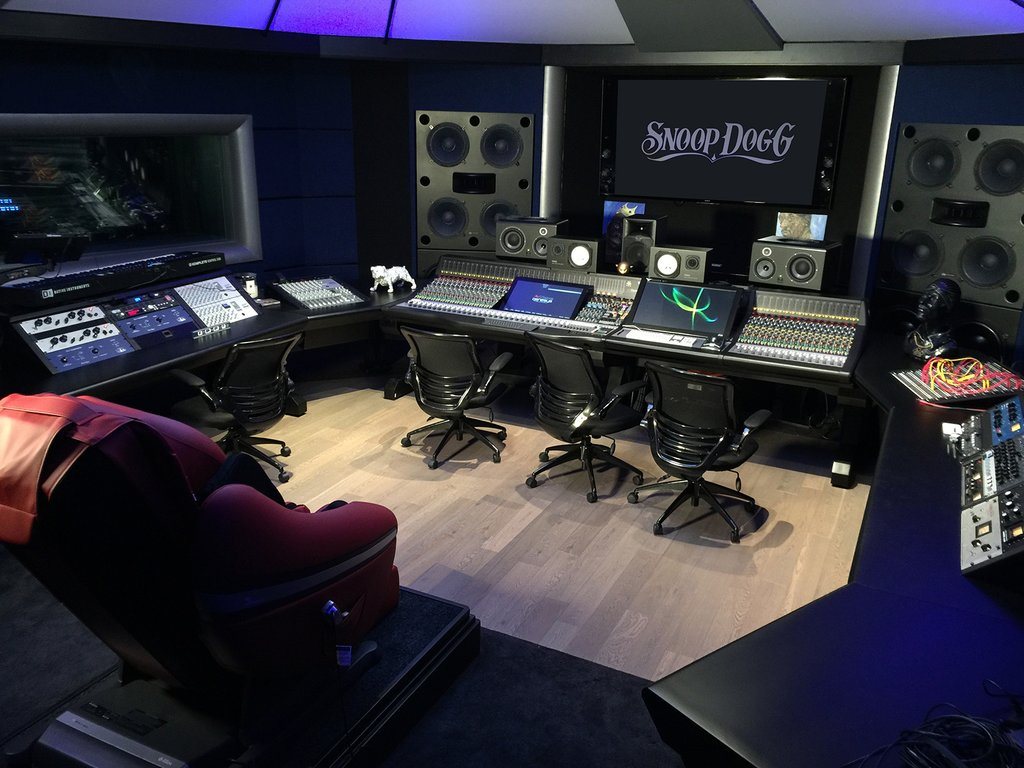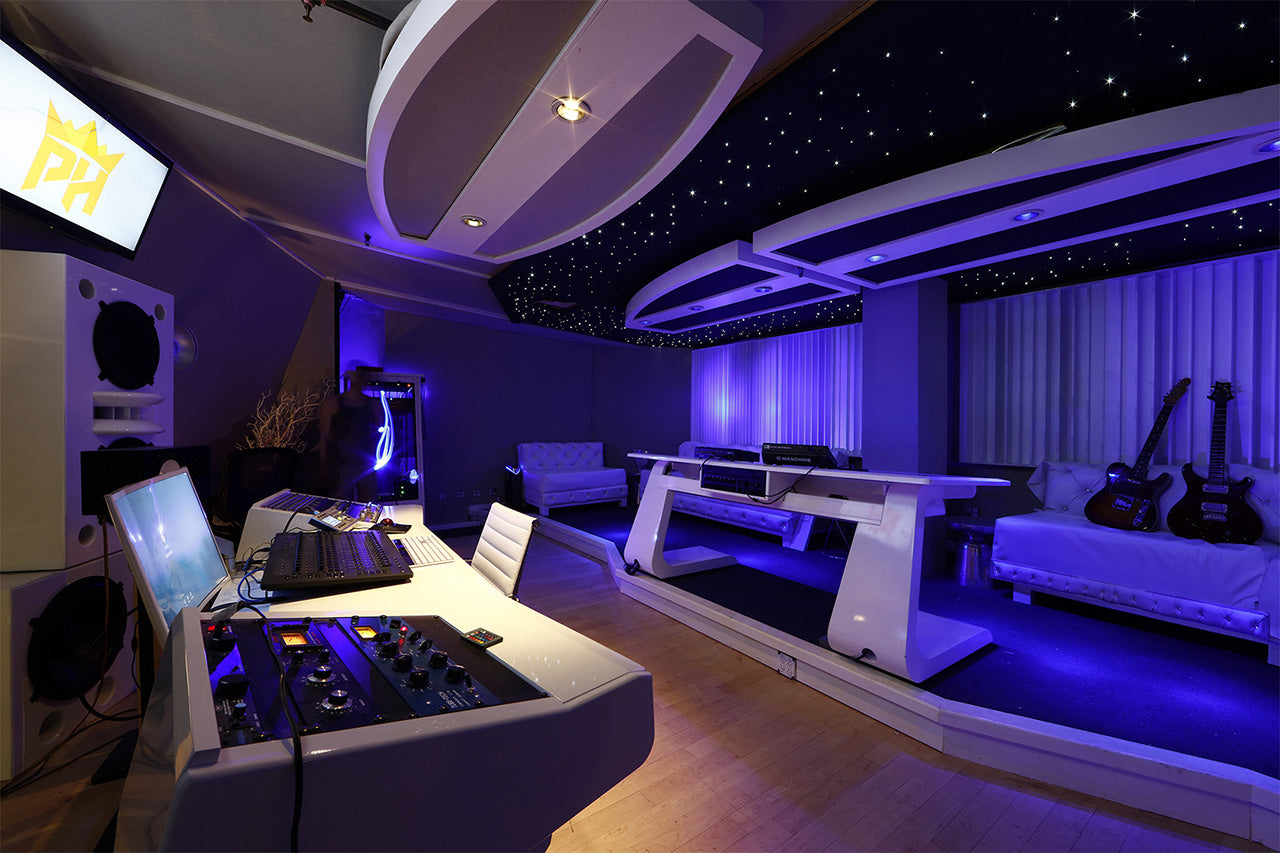The TEC award-winning Genelec 8331A SAM is a surprisingly compact and powerful 3-way point-source (coaxial) monitor that eliminates both physical and crossover phase anomalies, delivering an astoundingly detailed soundstage whether horizontally or vertically oriented - White finish (W).
The smallest of the Genelec 8300 series, the 8331A combines the wide-bandwidth and very low-distortion sound reproduction of 3-way active designs with the holy grail of monitor technology, the coaxial, or point-source driver configuration. However, these technologies present some problems to overcome, particularly in small rooms, where the 8331A is designed for. While a 3-way system is great for midfield and main monitors, it's not practical in a small room. Apart from the size requirements, the unpredictability of small-room acoustics* renders 3-way systems unreliable in space-limited control rooms. The other monitor configuration, and even more significant is point-source or coaxial technology. It's not a new idea, but until Genelec put its collective mind to it, point-source monitors were mostly just that, an idea with downsides to overcome, such as cone displacement and nonlinearity in the midrange. With the Genelec 8331A, the ultimate synthesis of 3-way active systems and coaxial drivers has come. The 8331A is a breakthrough 3-way, active point-source (or coaxial) monitor that's almost entirely immune to room characteristics, while the remainder can be controlled via Genelec's networked Smart Active Monitoring (SAM) and GLM loudspeaker management software.
Genelec 8331AW Coaxial Monitor unique features:
- Minimum Diffraction Coaxial (MDC) driver eliminates diffraction and breaks in the audible spectrum
- Minimum Diffraction Enclosure (MDE) Technology
- Acoustically Concealed Woofers (ACW) technology represents a new breakthrough in electroacoustic design
- Maximized Directivity Control Waveguide (MaxDCW) produces controlled directivity over a very wide bandwidth
- Dual woofer design extends directivity control also to bass frequencies
- Equally perfect performance in both vertical and horizontal orientations
- Genelec Loudspeaker Manager (GLM) computer control allows for repeatable, consistent performance over a flexible proprietary network
- Genelec AutoCal measures the response in the listening area and applies relevant compensation to minimize the room's acoustical influences
Genelec 8331AW SAM - Just the Facts:
- Space efficient size and design allow for astounding acoustical performance in various user environments
- Genelec quality and reliability ensures long-term investments and outstanding audio quality
- Elegant and minimalistic industrial design combining function and aesthetics
*PAD Tech Note: Small-room treatment requires more of an artisan's approach since there are no formulas or apps for small-room acoustics. The reason being is that you can't enter enough information to achieve definitive results. Since the walls and ceilings move, thereby acting as panel absorbers for the first two octaves, there are no predictive programs that can be applied. And while every decision made is scientifically based, the art lies in reconciling all of the overlapping factors (which no app or formula can dependably predict) and choosing the compromises that best benefit the space and its intended use.
Genelec 8331AW SAM - Behind the Grille
To achieve its remarkable sound, the 8331A is a product of four cutting-edge advancements in monitor technology, most significantly Genelec's breakthrough Acoustically Concealed Woofers, which enables the 8331A's dual woofers to act as a single large woofer, extending the low-frequency response to what you'd expect from a much bigger woofer. Not only does its coaxial design reduce the effects of the room characteristics, providing a wide sweet spot, the 8331A also features Genelec's Smart Active Monitor technology and AutoCal automatic room compensation functionality.
The advantages of point-source monitoring include an overall phase-coherent response since phase anomalies occurring from the physical separation of drivers on the monitor's front face. In essence, bass, midrange, and treble all radiate from the same position and extend outward to a single point much like the tip of a flame* from a candle. Like the candle flame, which comprises three zones, you can liken the bass to the outermost or hottest (most energy) portion of the flame, the middle zone (midrange), and the innermost zone, which is analogous to the high frequencies emanating from the tweeter.
In essence, the tip of the flame in audio is where all three components reach your ear with the greatest concentration and coherence. Point-source monitoring enables you to turn your head without having bass mid and treble reach your ear at different times from different source locations. As such, regardless of where you turn your head, you hear the same frequency response (the tip of the flame stays the same in relation to your position). According to Genelec, this also reduces ear fatigue, since your brain doesn't have to work overtime mixing the frequency zones into a coherent perception of sound reproduction. In short, the coaxial speaker configuration does all the heavy lifting for you.
PAD Fun Fact: The concept of visualizing low, mid, and high frequencies as components of a flame is the brainchild of the brilliant recording engineer, Michael Stavrou, who worked alongside the late Sir George Martin at Air Studios in London. According to “Stav,” mixing on a single point-source monitor in mono, such as the famous 5" mix cubes, creates a single flame coming at you - focused and condensed - that doesn't change regardless of your chair position. He likens it to holding the snow globes that you pick up in gift shops. You get an entire panorama that you can hold in the palm of your hand.
Acoustically Concealed Woofer (ACW)
Genelec's Acoustically Concealed Woofer (ACW) technology combines with the Minimum Diffraction Coaxial (MDC) driver and Directivity Control Waveguide (DCW) to produce extremely controlled directivity over a very wide bandwidth. The monitor's performance remains identical in both vertical and horizontal orientations, ensuring true accuracy in every application. All this works in concert with the versatility of Smart Active Monitoring (SAM). Additionally, Genelec Loudspeaker Manager (GLM) software enables fine adjustment of all monitor settings, while AutoCal compensates for adverse room characteristics to perfectly calibrate your set-up for your listening environment, whether you work in stereo or multichannel immersive audio.
The 8331A has a system frequency response from 45Hz to 37kHz (-6dB) and is capable of delivering 110dB peak SPL at 3.3 ft. (1 m)/99dB SPL RMS through a combination of efficient, Genelec-designed Class D amplifiers for the bass and midrange drivers, and discrete Class AB amplifier for the tweeter. The 8331A SAM is unique in monitoring technology. It's a three-way system with the directivity control of a much larger conventional monitor system in a conveniently compact package. Genelec SAM technology integrates the 8331A into the listening environment by automatically compensating for detrimental room influences. SAM technology enables computer controlled, flexible networked monitors and subwoofers that can be aligned and adjusted for level, time-delay, and room response.
Minimum Diffraction Coaxial (MDC) driver technology
Point-source or coaxial speaker designs in concept appear to offer nothing but advantages. While they do solve crossover issues due to non-coincident location of sources, in the real world they suffer from uneven frequency response due to edge diffraction. Genelec's Minimum Diffraction Coaxial (MDC) technology provides the advantages of coaxial designs and overcomes their serious shortcomings as well.
MDC achieves its results by minimizing cone displacement, which limits the low frequency bandwidth of the driver, and avoids all sources of diffraction. The main structure of the MDC design comprises an integrated MF diaphragm-suspension-tweeter construction. The visible part of the coaxial driver is formed by the curved flexible skin, with the dome tweeter assembly in its center. The inner section joins the cone to the tweeter without any acoustical discontinuity, and the outer one does the same between the cone and the driver chassis.
Since there is a smooth surface between the tweeter and the cone, there's no diffraction. The cone profile is very carefully optimized to form an integrated directivity control waveguide for the tweeter radiation. The driver outer edge is terminated to a normal Genelec DCW in order to control the dispersion of midrange radiation as well. The result is a very smooth on- and off-axis, response, effectively controlled directivity, and anomaly-free performance.
The main features of the combined DCW and MDC designs are:
- Diffraction-free joint between tweeter and midrange diaphragm
- Diffraction-free joint between midrange diaphragm and DCW waveguide
- A proprietary midrange diaphragm technology - laminate structure combining a rigid cone and elastic, lossy materials including the suspension itself
- A midrange diaphragm-suspension pair that cancels all possible non-linearity
Advantages:
- Lead to smoother frequency response
- Ensure the drivers to couple coherently over their full operating bandwidth
- Significantly improve the directivity control in the critical frequency range
- Provide balanced suspension dynamics to minimize acoustic distortion
- Optimize the use of the front baffle area while maintaining the 8000 series appearance and benefits
Minimum Diffraction Enclosure (MDE) technology
There are two types of acoustic reflections: the kind that enhances our audio and the kind that interferes with it. One we call reverb, the other is known by several terms, including comb filtering, nodes, standing waves, and modes. Interestingly enough, both come from the same source: the room in which audio is produced. EQ can go a long way to ameliorate the inconsistent frequency behavior unique to every listening environment. However, since these are actual physical properties, EQ alone is not enough. That's where Genelec's Minimum Diffraction Enclosure (MDE) comes in. Its purpose is to improve frequency linearity and the power response of free-standing studio monitors. It accomplishes this via rounded edges and gently curved front and sides optimized to match the acoustic properties of the drivers. In addition to achieving a remarkably flat frequency response, minimizing cabinet diffractions yields superb sound stage imaging.
Maximized Directivity Control Waveguide (MaxDCW)
The waveguide integrated into the 8331A's aluminum MDE enclosure further improves directivity control. In theory and practice, the low-frequency limit for constant directivity is determined by the size of the waveguide. As such, the larger the surface the better the control. In multichannel monitoring, this takes on greater significance. Highly directional off-axis radiation yields a consistent listening window. Controlled directivity also reduces possible first-order reflections on surfaces near the loudspeaker, such as walls, floors, ceilings, and studio furniture, all of which contributes to consistent audio reproduction in a much wider variety of acoustic environment, as opposed to conventional designs.
Acoustically Concealed Woofer (ACW) technology
The 8331A Acoustically Coaxial Three-way system is a dual-woofer design that uses two oval-shaped drivers that radiate from the slots at either end of the cabinet. What makes this design unique, apart from the woofers being concealed behind the enclosure, is that acoustically they behave like one big woofer that spans the distance of the entire cabinet. Not only does the dual woofer design extend directivity to the low frequencies, the woofer and their openings in the cabinet are acoustically invisible to the frequencies of the midrange driver and the tweeter. Since the entire front baffle of the 8331A is a Directivity Control Waveguide, low-frequency interaction with the room is reduced, which makes bass treatment easier. The result is a compact monitor that behaves like a much larger 3-way system, particularly in the low frequencies.
Intelligent Signal Sensing function
Genelec's Intelligent Signal Sensing (ISS) is a power-saving feature that prolongs the service life of the monitor. ISS reduces power consumption to less than 0.5 watts by automatically switching the active monitor to standby when no audio signal has been detected for some time. When playback begins, the mode indicator light on the loudspeaker lights up and the playback resumes after a slight delay (<2 seconds).
Protection circuitry
The protection circuitry prevents driver failure by detecting signal levels and responding accordingly. In the case of sudden peaks or levels that are too high for long periods, the protection circuitry reduces signal level automatically. This feature does not affect the sound quality in any way when working within the specifications of the loudspeaker, but only prevents inappropriate input signals from breaking the loudspeaker.
Protection circuitry features and benefits:
- Reduces the output level when required (e.g. when driver voice coil temperature reaches the safe limit), which highly improves system reliability
- Appropriate protection circuitry design for each loudspeaker and subwoofer maximizes system output level
Room compensation controls
Each room changes the monitor's response in a unique way, e.g. reflective vs. damped rooms, or placement against a wall vs. on a stand away from the walls. All Genelec loudspeaker systems feature room response adjustments to compensate for the room influences and retrieve a flat frequency response at the listening position. Frequency response can be adjusted to match the acoustic environment by setting the tone control switches on the rear panel of all Genelec monitors.
Networked Smart Active Monitor (SAM) Systems
Genelec's advanced SAM Systems can automatically adapt to acoustic environments and correct for levels, delays and room anomalies. SAM Systems can be controlled via Genelec proprietary Loudspeaker Manager (GLM) network and software, enabling you to build a highly flexible and reliable monitoring system. If the monitors have to move between rooms, you can rely on SAM technology to give you absolute consistency, a neutral soundstage, and low distortion. All electronics, drivers, and enclosures are designed, assembled, tested, and calibrated in Genelec's factory in Finland. Genelec quality and reliability ensure a secure long-term investment, with environmentally conscious, low energy consumption and outstanding audio quality.
AutoCal room calibration
Genelec AutoCal is a system integrator's dream and gets you out of stasis and into production faster. It facilitates setup by measuring acoustic response in the listening area and applying the appropriate compensation in the low and low-mid frequencies to minimize the muddying effect of room modes and other unwanted room resonances, while simultaneously accounting for the differences between various listening positions.
Optimized amplifiers with active crossover
In a typical 2-way loudspeaker system, the active crossover needs two power amplifiers; one for the woofer and one for the tweeter. Electronic crossovers split the audio signal into separate frequency bands that can be separately routed to individual power amplifiers optimized for the frequency band of their respective transducers.
The power amplifiers are connected directly to the drivers of an active loudspeaker, resulting in the power amplifier's load becoming much simpler. Each driver-specific power amplifier has only a limited frequency range to amplify (the power amplifier is placed after the active crossover), which adds to the ease of design.
The active design principle offers multiple benefits:
- The power amplifiers are directly connected to the speaker drivers, maximizing the control exerted by the power amplifier's damping on the driver's voice coil, reducing the consequences of dynamic changes in the driver electrical characteristics. This may improve the transient response of the system
- There is a reduction in the power amplifier output requirement. With no energy lost in the passive crossover filter components, the amplifier power output requirements are reduced considerably (by up to 1/2 in some cases) without any reduction in the acoustic power output of the loudspeaker system. This can reduce costs and increase audio quality and system reliability
- No loss between amplifier and driver units results in maximum acoustic efficiency
- Active technology can achieve superior sound output vs. size vs. low-frequency cut-off performance
- All loudspeakers are delivered as a factory aligned system (amplifiers, crossover electronics, and enclosure-driver systems)
High air-flow bass reflex port design
There are three methods to handle bass frequencies in small monitors, infinite baffle, or sealed cabinet, ported reflex, and transmission line (passive radiator designs are a subset of ported reflex speakers). Genelec's choice for vented, or reflex, enclosures dates back to the first Genelec product in 1978. Since then Genelec has refined and improved their designs to increase low-frequency extension and sound pressure level capability to provide outstanding bass articulation and definition.
The downside of ported designs is that turbulence in the ports due to extreme air pressure from the driver excursions can cause chuffing noise in the ports, and/or interfere with frequencies higher up in the spectrum. To minimize air speed and turbulence, the cross-sectional area of the vent should be large. This, in turn, means that the vent tube has to be long, which presents quite a design challenge. Genelec's solution is a long, curved tube that maximizes airflow so deep bass can be reproduced without compression. The reflex tube terminates with a wide flare located on the rear of the enclosure minimizing port noise and providing excellent bass articulation.
The curvature of the tube has also been carefully designed to minimize any audible noise, compression, or distortion. The inner end of the tube has the proper resistive termination to minimize audible chuffing noise and air turbulence. Proper reflex port design allows also to significantly reduce the woofer's displacement, improving the linear low-frequency output capacity.
PAD Tech Note: For small cabinets to handle bass frequencies lower than the laws of physics would allow, the ported or reflex is the easiest design from a manufacturing standpoint to achieve a deep bass response. It takes advantage of the cabinet's resonance and in essence feeds sound coming from the rear of the speaker through a tube connected to the back of the cabinet into ports, which are usually on the front panel. The length and diameter of the tube are precisely calculated for the desired low-frequency response. The trick is to make sure the sound coming from the port is in phase with the speaker, which reinforces the low frequencies of the monitor. It's important to note that while this technique does provide a better bass response in small cabinets, it's primarily a psychoacoustic effect. The addition of a subwoofer enables smaller drivers to handle midrange frequencies while bass frequencies are directed to a larger dedicated bass driver.
Iso-Pod stand
Often workstation furniture has equipment racks whose top surfaces double as speaker stands. While this may be a convenient option, placing speakers on wooden surfaces or console meter bridges has side effects detrimental to accurate and effective monitoring. In such a scenario, aiming the loudspeaker axis towards the listener rarely occurs, and sympathetic vibrations (which are not very sympathetic to bass) propagate from the loudspeaker to the surface. Also, first-order reflections on the surface cause comb filtering and subsequently ripples in the frequency response.
To solve these very common problems, Genelec designed the Iso-Pod Isolation Positioner/De-coupler. Made from special lossy rubber-like material to de-couple the speaker from a surface, it has four shallow feet and is firmly attached to the enclosure so that it can be slid along the curved bottom or side surface to allow for a ±15° tilt of the loudspeaker. The loudspeaker's acoustical axis can then be pointed precisely towards the listener. The vibration isolation and damping properties reduce midrange coloration caused by unwanted vibration transmitted to supporting surfaces.
Versatile mounting options
On the base of the enclosure is a 3/8" UNC threaded hole which can accommodate a standard microphone stand. On the rear there are two M6x10 mm threaded holes for an Omni-mount size 20.5 bracket.
The Genelec 8331A SAM's point-source monitoring ensures truthful response in every professional setting, from recording studios to post-production houses, edit suites, broadcast facilities, and outside broadcast vehicles. For more information, call or chat online with your PAD Studio Specialist today.
Specifications
System
- Lower cut-off frequency, ”“6dB: 45Hz
- Upper cut-off frequency, ”“6dB: 37kHz
- Free field frequency response, ± 1.5dB: 58Hz-20kHz
- Maximum short term sine wave acoustic output on axis in half space, averaged from 100Hz to 3kHz @ 1 m: ≥104dB SPL
- Maximum long term RMS acoustic output in the same conditions with IEC weighted noise (limited by driver protection circuit) @ 1m: 99dB
- Maximum peak acoustic output per pair in a listening room with music material @ 2 m: 110dB
- Self-generated noise level in free space at 2 m on axis (A- weighted): ≤0dB
Harmonic distortion at 85dB SPL at 1 m on axis:
- Frequency 50-100Hz: < 2%
- Frequency > 100Hz: < 0.5%
Drivers
- Bass: Dual 5-1/8" x 2-5/8" (130 x 65 mm) oval cones
- Midrange: 3-1/2" (90 mm) cone (coaxial)
- Treble: 3/4" (19 mm) metal dome coaxial
Amplifier Section
- Bass amplifier short-term output power: 72W
- Midrange amplifier short-term output power: 36W
- Treble amplifier short-term output power: 36W
Long-term output power is limited by driver protection circuitry
- Amplifier system THD at nominal output: < 0.05%
- Mains voltage: 110-240 VAC, 50/60Hz
Power consumption
- ISS active: <0.5W
- Idle: 4W
- Full output short term: 60W
Signal Processing Section
- Analog signal input connector: XLR female, balanced 10k ohm
- Maximum analog input signal: +24dBu
- Analog input sensitivity (100dB SPL at 1 m): -6dBu
- Analog input sensitivity control: +36dBu to ”“ 6dBu
- Digital input connector (XLR female 110 ohm): AES/EBU single wire
- Digital output/thru connector (XLR male 110 ohm): AES/EBU single wire
Digital audio input
- Word length: 16/24-bit
- Sample rate: 32kHz ”“ 192kHz
- Digital input sensitivity (100 dB SPL at 1 m): -30dBFS
- Digital input maximum attenuation: 42dB
Control network
- Type: Proprietary GLM network
- Connection: 2x RJ45, CAT5 cables
Crossover frequency
- Bass/Mid: 500Hz
- Mid/Treble: 3Hz
GLM software frequency response adjustment
- Parametric notch filters: 16
- Shelving filters: 2 LF, 2 HF
- System room response calibration: Genelec GLM AutoCal, GLM manual, stand-alone*
Physical
- Finish: White (W)
- Weight 15 lb. (6.7 kg)
Dimensions (monitor enclosure)
- Height including IsoPod stand: 12" (305 mm)
- Height without IsoPod stand: 11-1/4" (285 mm)
- Width: 7-1/2" (189 mm)
- Depth: 8-3/8" (212 mm)
* The notch and shelving filters adjustments, AutoCal and GLM manual system calibration features are part of the Genelec Loudspeaker Manager (GLM) software








